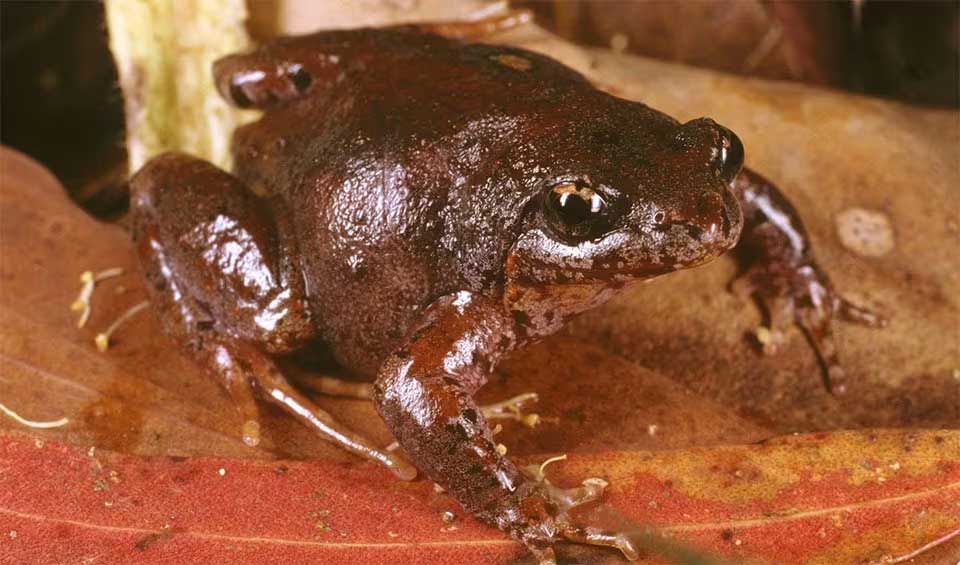Geocrinia
Unlike many frogs, they have soft, melodic calls that are hard to hear over long distances
Geocrinia frogs are predominantly found in the southwestern regions of Australia, with some species extending into southeastern parts. They inhabit damp forests, woodlands, and swamps, often preferring areas with abundant ground cover such as leaf litter, moss, and fallen logs. These habitats provide the moisture and shelter necessary for their survival. The geographical distribution of Geocrinia frogs is often highly localized, with some species occupying very specific ecological niches, making them particularly vulnerable to habitat changes.
These frogs are small, and their coloration varies among species, but it generally includes shades of brown, gray, and sometimes reddish hues, often with patterns of spots or stripes that provide effective camouflage against the forest floor. Their skin is smooth, and they have short limbs adapted for their ground-dwelling lifestyle. Unlike many other frogs, Geocrinia species do not have webbed feet, as they are not primarily aquatic.
One of the most fascinating aspects of Geocrinia frogs is their unique reproductive strategies. Unlike many other frogs that lay eggs in water, Geocrinia species often lay their eggs on moist ground under leaf litter or in shallow burrows. The eggs develop directly into froglets, bypassing the free-swimming tadpole stage entirely. This terrestrial breeding strategy adapts to their often temporary or seasonal water sources. For example, the Southern smooth froglet lays its eggs in damp moss or soil, where the male guards them until they hatch. The eggs are surrounded by a jelly-like substance that retains moisture, crucial for the development of the embryos. After several weeks, the eggs hatch into miniature froglets, fully formed and ready to begin life on land.
Species in this genus
Eastern smooth frog
This frog is found predominantly in Victoria and southeastern New South Wales. It thrives in various habitats, including damp forests, woodlands, grasslands, and coastal heathlands. These frogs prefer abundant ground cover, such as leaf litter, logs, and rocks, which provide essential moisture and shelter. They are commonly found near water bodies, including ponds, streams, and […]


